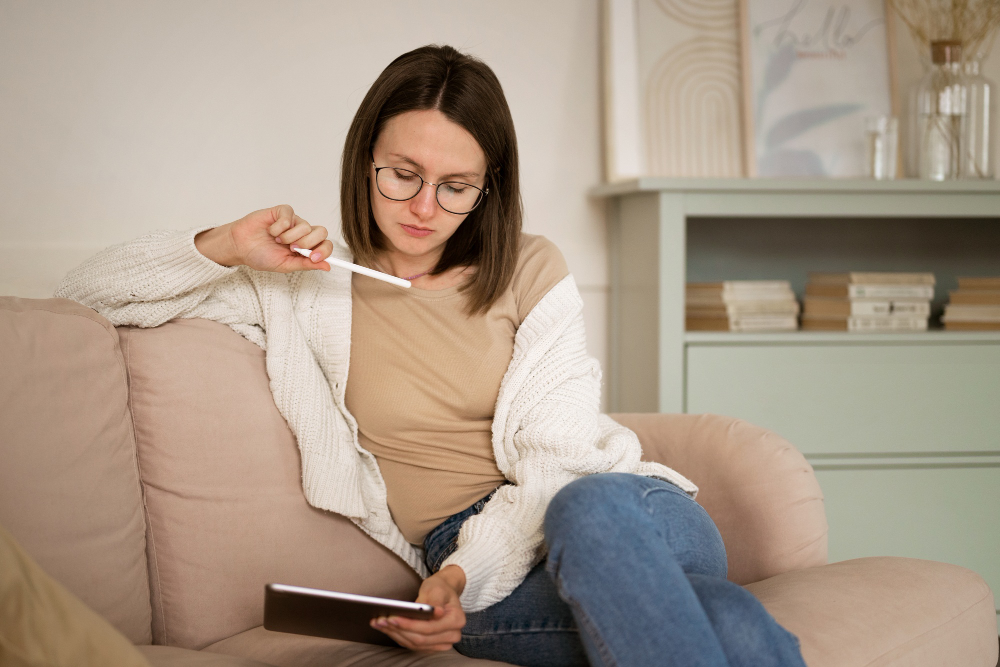Introduction
Understanding your fertility window is key if you want to increase your chances of pregnancy. The fertility window is the time when you are most likely to get pregnant. It centers around ovulation, which is when your ovary releases an egg. Knowing how to track ovulation can help you plan for a baby. Many people find this information helpful when trying to conceive. In this blog, we will explain the fertility window, signs of ovulation, and the best ovulation tracking methods.
What is the Fertility Window?
The fertility window is the period in your menstrual cycle when pregnancy is most likely. Usually, it lasts about six days. This includes the five days before ovulation and the day of ovulation itself. Sperm can live inside the body for up to five days. However, the egg only survives for about 24 hours after ovulation. Because of this, timing is important if you want to conceive.
Why is Tracking Ovulation Important?
Tracking ovulation helps you know your most fertile days. If you want to increase your chances of pregnancy, timing intercourse during your fertility window is key. Many couples find that knowing when ovulation happens makes planning easier. In addition, tracking can help spot irregular cycles or possible health issues. This information is useful if you need to speak with a doctor later.
Signs and Symptoms of Ovulation
There are several signs that may show you are ovulating. While not everyone has the same symptoms, some common signs include:
However, not all women notice these changes. Therefore, using more than one method to track ovulation can be helpful.
Methods to Track Ovulation
There are several ways to track ovulation. Each method has its own benefits. Here are the most common and best ovulation tracking methods:
1. Calendar Method
This method involves tracking your menstrual cycle on a calendar. Most women ovulate about 14 days before their next period. However, cycles can vary. For best results, track your cycle for a few months to spot patterns.
2. Basal Body Temperature (BBT)
Your basal body temperature is your lowest body temperature in a day. After ovulation, your BBT rises slightly. By taking your temperature every morning before getting out of bed, you can spot this change. Over time, you may see a pattern that helps predict ovulation.
3. Ovulation Predictor Kits (OPKs)
These kits test your urine for a hormone called LH (luteinizing hormone). LH rises just before ovulation. When the test shows a surge, ovulation is likely to happen in the next 12 to 36 hours. OPKs are easy to use and widely available.
4. Cervical Mucus Method
During your cycle, the mucus in your cervix changes. As ovulation nears, it becomes clear, slippery, and stretchy. Checking your mucus each day can help you spot your most fertile days.
Tips for Accurate Tracking
To get the best results, follow these tips:
In addition, some apps can help you keep track of your data easily.
Common Myths and Facts
When to Consult a Doctor
If you have been trying to conceive for over a year without success, it may be time to see a doctor. Women over 35 should consider seeking help after six months. Also, if your cycles are very irregular or you have other health concerns, a healthcare specialist can offer guidance. In some regions, access to fertility clinics may vary, so check local resources for support.
Conclusion
Understanding your fertility window and knowing how to track ovulation can increase your chances of pregnancy. Using the best ovulation tracking methods and watching for fertility window signs can make a big difference. If you have questions or concerns, consult a healthcare specialist at Khurana Hospital and IVF Centre for personalized fertility guidance.

